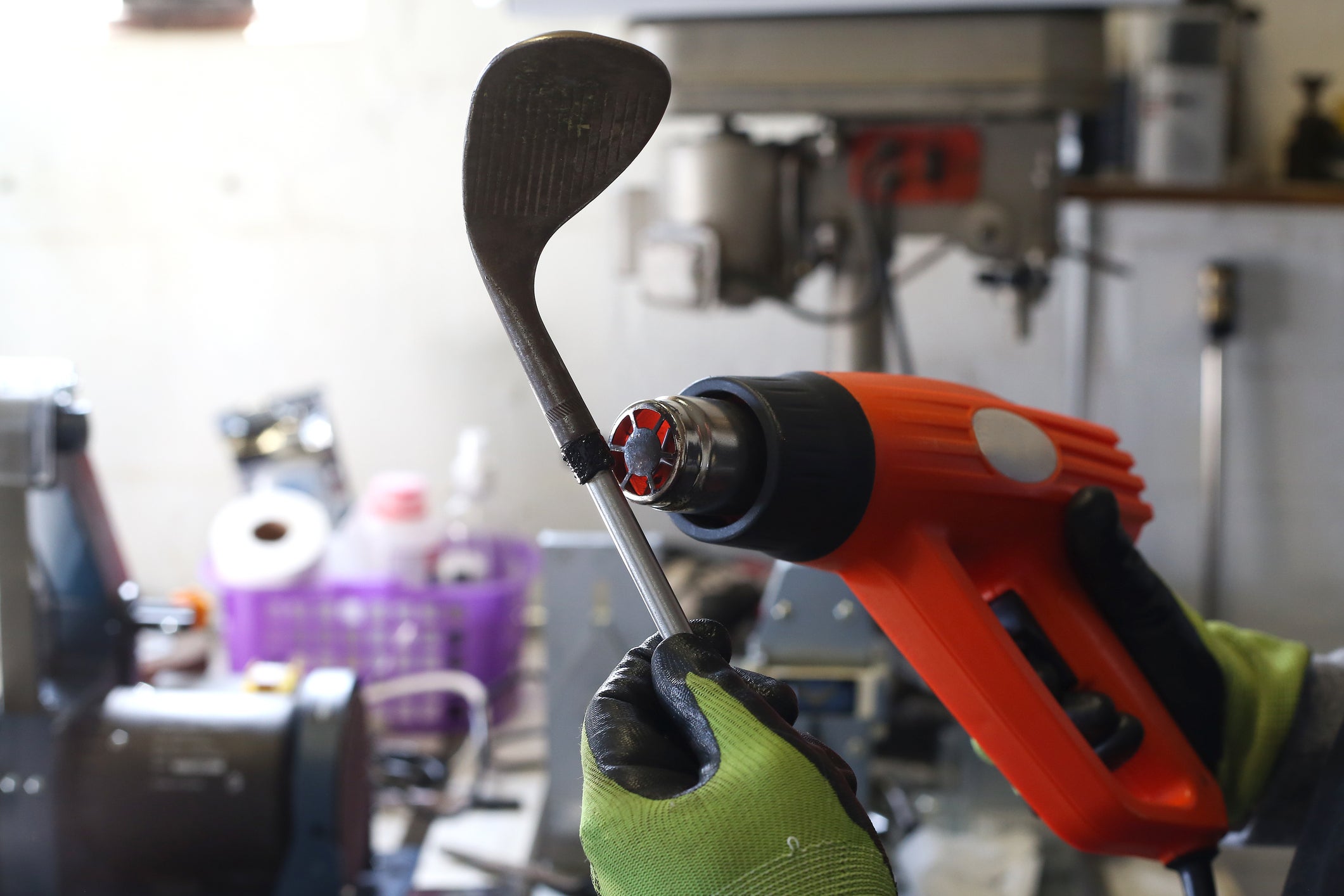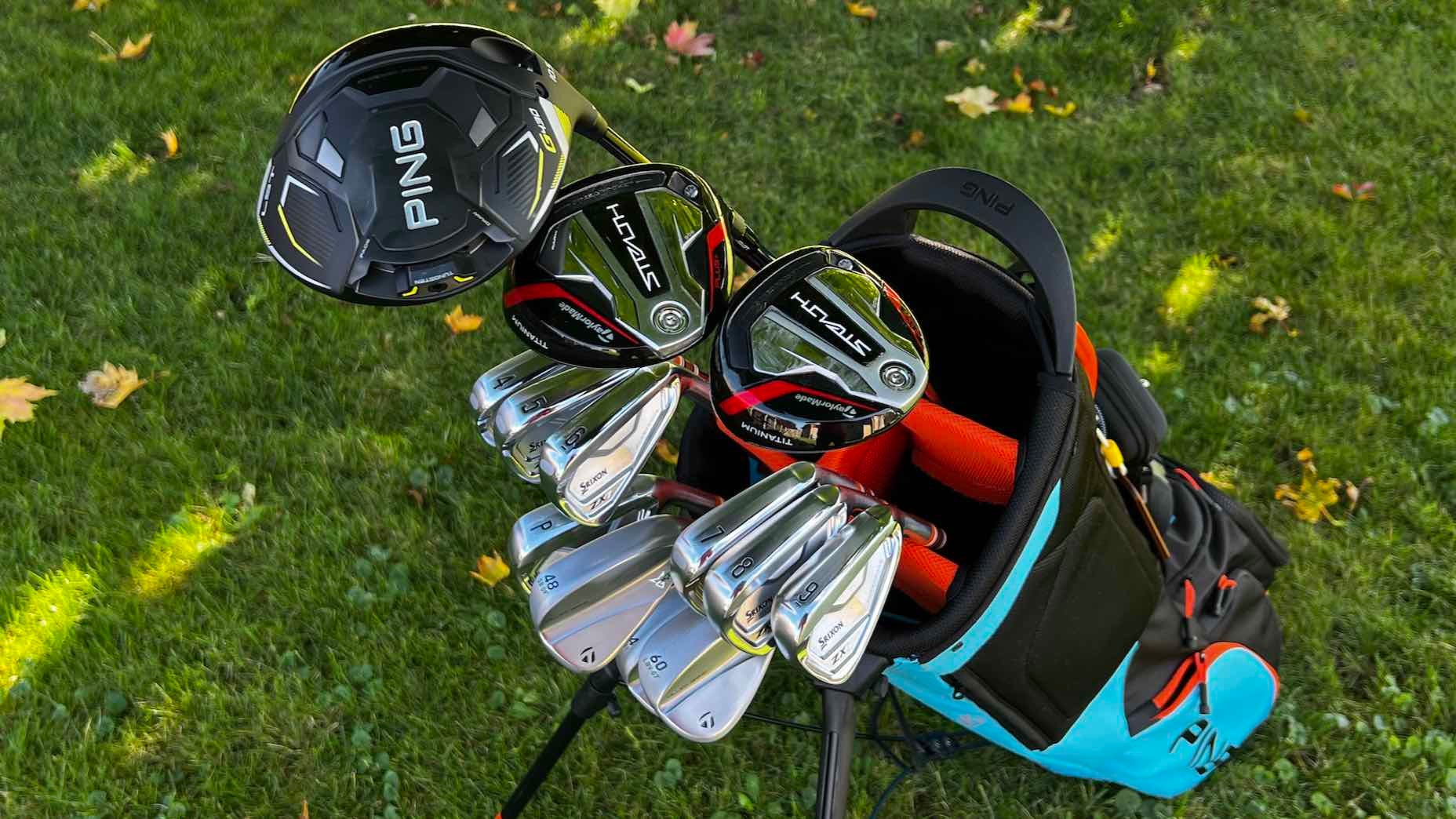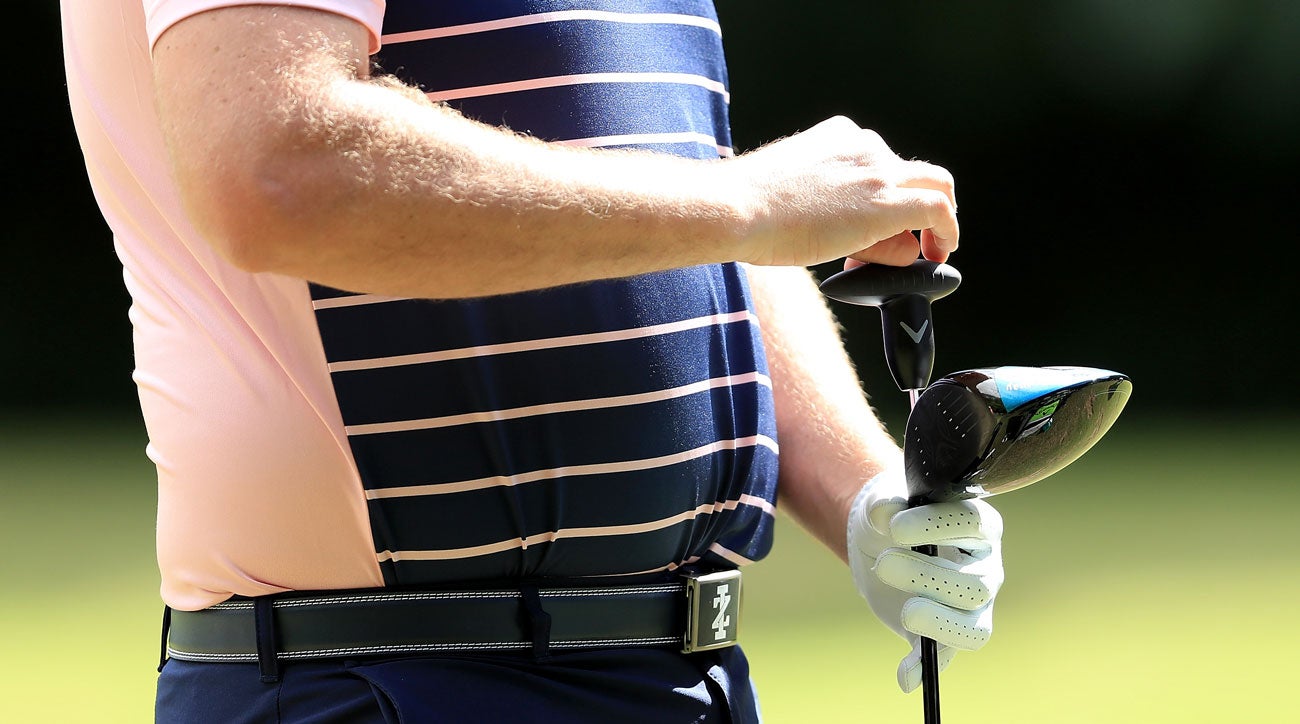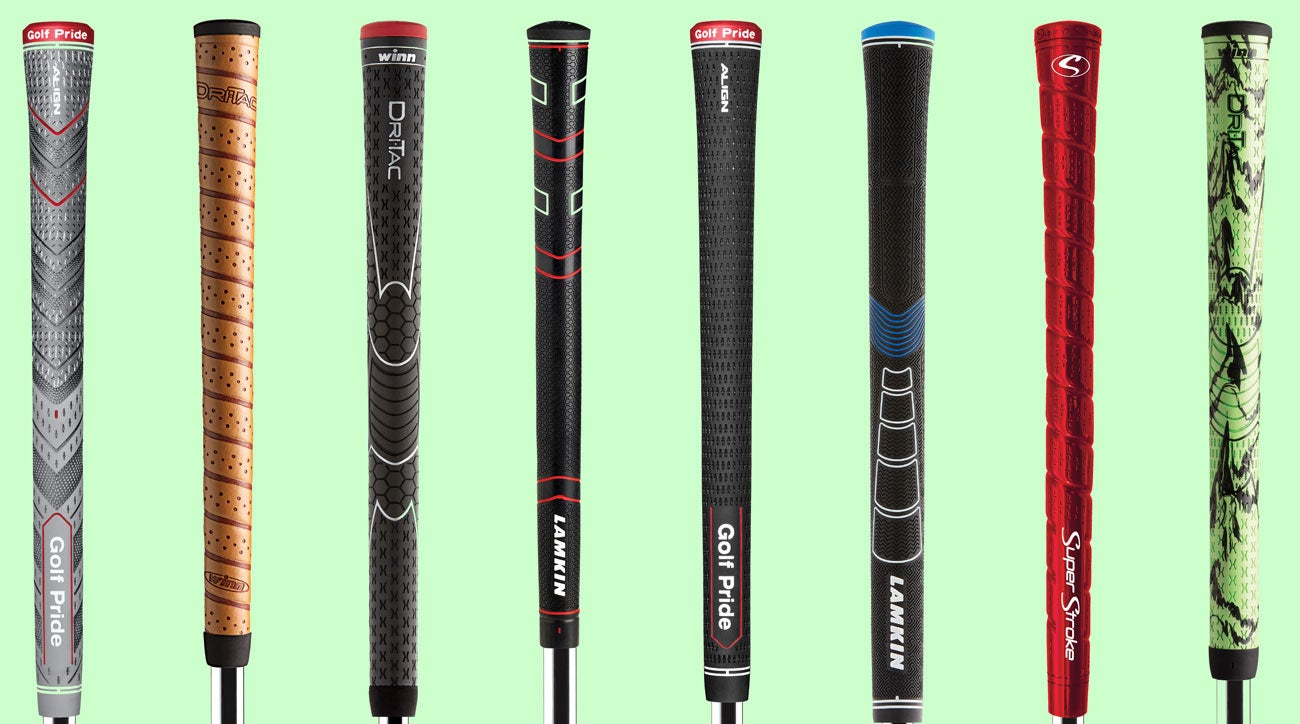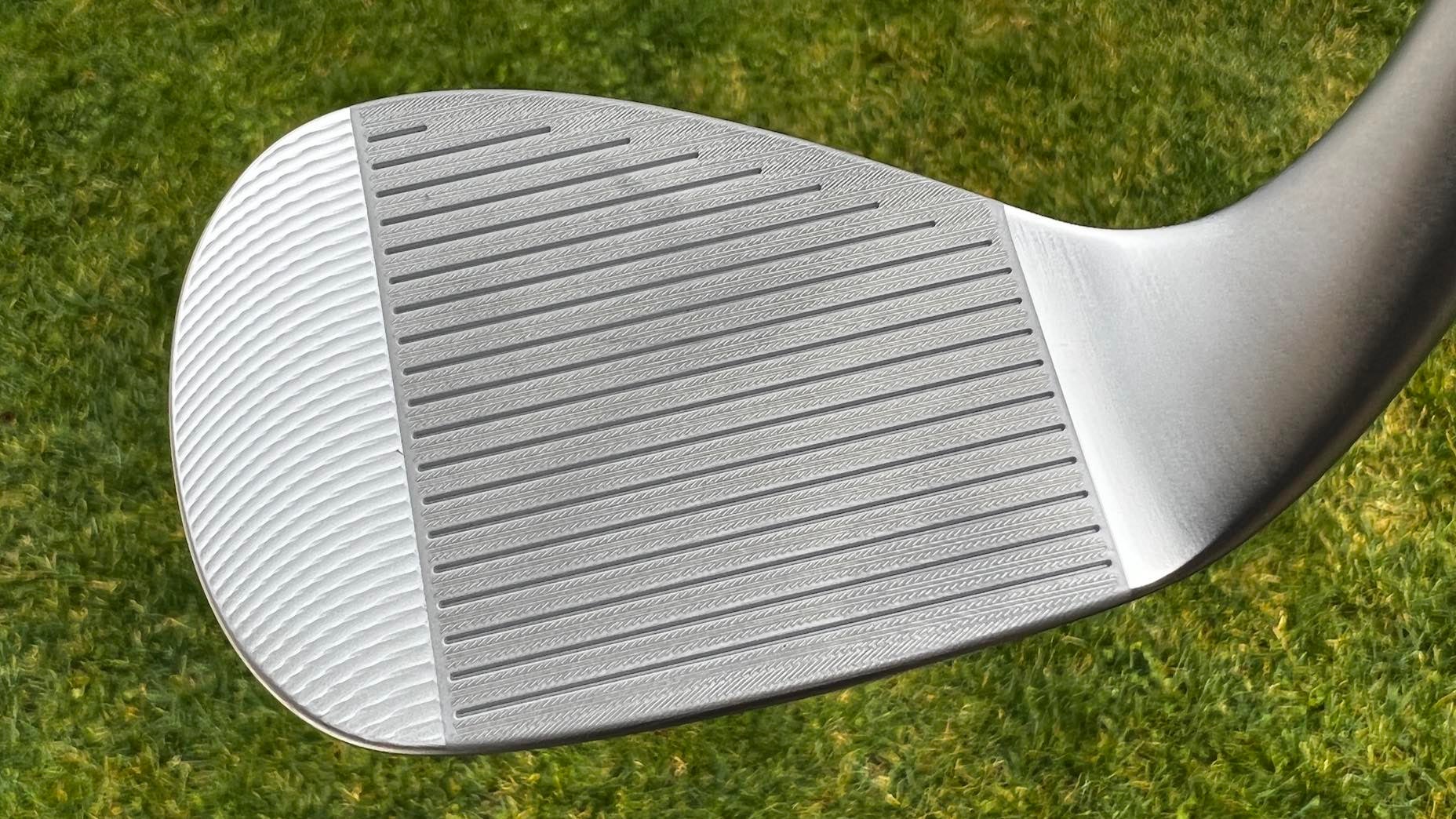Welcome to Gear Questions You’re Afraid to Ask, a GOLF.com series produced in partnership with Cleveland/Srixon Golf.
On the heels of last week’s installment about broken clubs and how to avoid them, you might be wondering if there is anything you can fix on your own with regards to your golf gear. And while most club repairs ought to be left to the professionals, there are a few things you can do yourself to keep your clubs in tip-top shape.
Let’s look at a few repairs/enhancements you can make yourself, as well as one that maybe you can do, and close with something you probably shouldn’t do.
You can do
Put new grips on
Re-gripping your clubs is fairly simple, and it’s even easier if you have a particular tool like this one. Having a hook blade makes removing grips much easier than would be with a standard knife or even a razor blade. Additionally, it lessens the chance you’ll scratch or gouge the shaft. The next step is removing old tape (sometimes you can get away with reusing old tape, but it’s almost always better to use fresh double-sided tape under your grips) which could be a chore, but it’s doable if you use something like Goof Off or another adhesive remover. Sliding new grips on is the easy part—simply saturate the inside of the grips with solvent and pour the excess on the tape to make it slippery—albeit temporarily. Once the solvent evaporates under the grip (don’t worry, it will) the grip tape will regain its stickiness to hold your grips securely. (Bonus! Tune in below to the Fully Equipped podcast below for a quick tip on how you can keep your grips in better shape and working like new.)
Use custom paint fill
We’ve seen some pretty incredible custom club designs using various colors of paint fill. And while it’s never a good idea to use paint anywhere near the clubface, pretty much anyone can dab some fresh paint in the logo stamps or club numbers on the bottom and rear of the clubheads. Just remember you need to remove the old paint first. And, even though industrial paint remover is potent stuff and it works wonders at removing old paint fill, it’s also extremely dangerous. Take special precautions and wear protective gloves and eyewear when removing paint. And come time to use a custom paint fill, be sure you use enamel paint or better yet, automotive-grade paint. Both are far more durable than acrylic paint. (We’ve seen some people use nail polish to varying degrees of success and longevity, including yours truly.)
Touch-ups and scuff removal
If the crown of your driver picks up a ding or paint chip, you could easily fill that mark with the aforementioned type of paint. But what about scuffs on your irons or putter? In these cases, as long as it’s not near your grooves, some sandpaper could help you smoothen out a rough patch on your unpainted/unfinished/non-chromed clubs. Putters are often made of softer metals, and sandpaper could be an effective tool for not only scuffs or scratches, but for polishing out small dents as well. Start with a rougher grit to remove the scuff, then use a finer grit to polish it off.
Go see an OEM fitter
This isn’t something you could do, it’s something you should do. Most equipment manufacturers hold demo/fitting days at various locations around the country throughout the golf season. For example, Srixon has a demo day somewhere around the country (often with many on the same day at different locations) almost every day in the month of July. Not only can try new gear at a demo day, but you can also buy new clubs (that are fitted for you) as well as trade in your old clubs. Talk about a win-win-win.

Cleveland Launcher XL
You might be able to do
Reshaft your clubs
To do this, you need the tools necessary for the job. That includes a blowtorch to heat the epoxy up and slide the head off whatever shaft you’re replacing. You also need some basic understanding of shaft tip diameters and shaft cutting (tip or butt trimming) and also how much epoxy you need or don’t need, etc. Again, it’s not that it’s the most difficult task, but anytime you’re using heat and hot metal, epoxies and blades—you really need to make sure you’re comfortable and proficient enough to get the job done right.
You really shouldn’t do
Adjust your lie and loft
This may seem like an easier task than would be swapping shafts, but adjusting the lie and loft of your clubs to tweak your ballflight requires exceptional skill to do correctly. Usually, when we talk bending we’re reference irons and wedges, but we’ve seen some drivers and woods that can accommodate bends, too.
However, it’s probably better you opt for a driver or wood (or even a hybrid for the matter) that has an adjustable sleeve that allows you to adjust the loft and lie angles without any bending at all.
We’ve seen some incredibly skilled adjusters able to adjust loft/lie with nothing more than a vice grip, a hand bending tool and rubber mallet. But most fitters use a loft/lie bending machine, which if you’re in the market for one, can get expensive. Also, you need to make sure you’re bending the right types of clubs (that allow for it) and make sure you’re adjusting them for the right reasons.
For instance, better players sometimes prefer a flatter wedge to make it easier to hit open-faced shots and to prevent wedge shots from going left. But is that a good idea for you if you have an upright swing? Probably not. We strongly recommended that a clubfitter help you through this and have your fitter make adjustments for you. Better yet, have the OEM do the bends for you via custom order. If anything, just to make sure it’s done in a manner that the OEM prefers.
Last and far from least, having the right tools is important, but having the skill is even more essential. Clubfitters go through some rigorous training to do what they do, and the good clubfitters know how to take a club off the rack and turn it into something tweaked specifically for you. When it doubt, always consult a reputable clubfitter to make adjustments to your gear—even if means simple tasks like re-gripping or fixing cosmetic blemishes.
Want to overhaul your bag for 2022? Find a fitting location near you at GOLF’s affiliate company True Spec Golf. For more on the latest gear news and information, check out our latest Fully Equipped podcast below!
